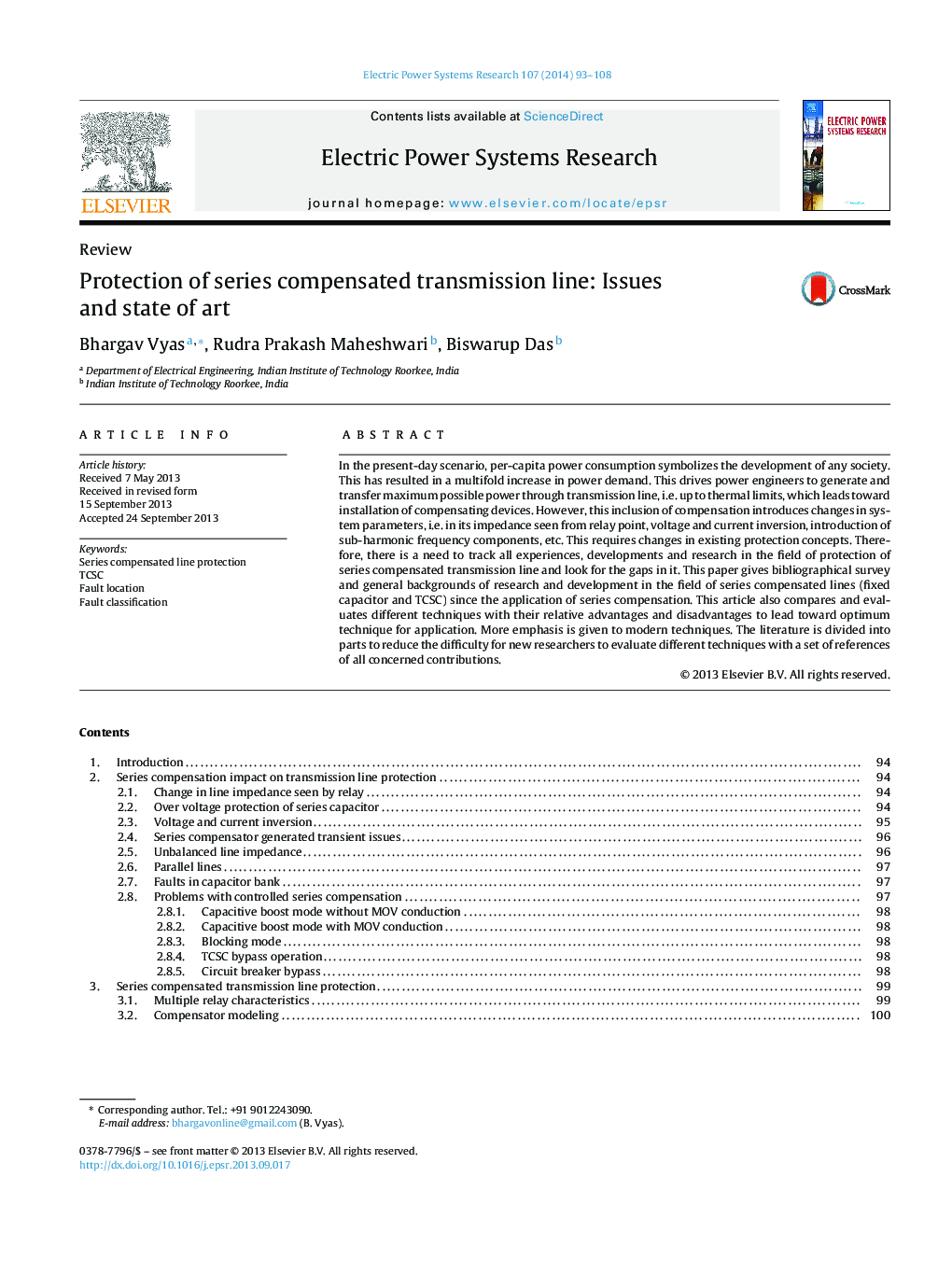| Article ID | Journal | Published Year | Pages | File Type |
|---|---|---|---|---|
| 704821 | Electric Power Systems Research | 2014 | 16 Pages |
•This article reviews protection schemes for series compensated transmission lines.•In the second section, the impact of series compensation has been summarized for EHV transmission line protection.•The third section gives bibliographical survey and general backgrounds of research and development in the field of series compensated line protection.•A separate section compiles basic schemes for fault location techniques.•Recent implementation and experiences in field of series compensated transmission line protection are summarized.
In the present-day scenario, per-capita power consumption symbolizes the development of any society. This has resulted in a multifold increase in power demand. This drives power engineers to generate and transfer maximum possible power through transmission line, i.e. up to thermal limits, which leads toward installation of compensating devices. However, this inclusion of compensation introduces changes in system parameters, i.e. in its impedance seen from relay point, voltage and current inversion, introduction of sub-harmonic frequency components, etc. This requires changes in existing protection concepts. Therefore, there is a need to track all experiences, developments and research in the field of protection of series compensated transmission line and look for the gaps in it. This paper gives bibliographical survey and general backgrounds of research and development in the field of series compensated lines (fixed capacitor and TCSC) since the application of series compensation. This article also compares and evaluates different techniques with their relative advantages and disadvantages to lead toward optimum technique for application. More emphasis is given to modern techniques. The literature is divided into parts to reduce the difficulty for new researchers to evaluate different techniques with a set of references of all concerned contributions.
